Birth Name Tsugunomiya Akihito Name Tsugunomiya Akihito Enthronement 12 November 1990 Spouse Empress Michiko (m. 1959) | Name Tsugunomiya Akihito Predecessor Showa | |
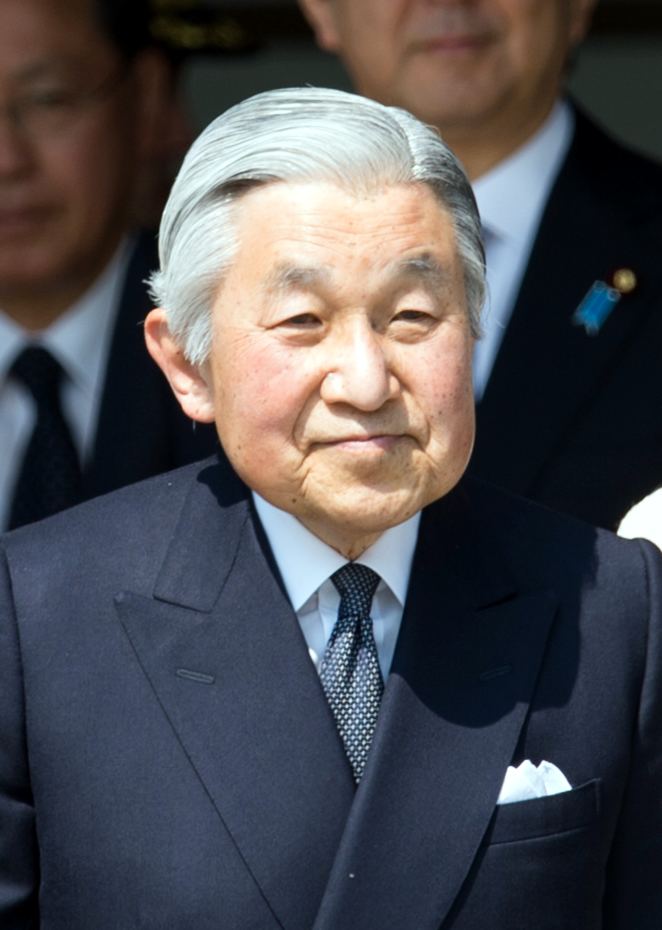 | ||
Reign 7 January 1989 – present Prime Ministers See listNoboru TakeshitaSosuke UnoToshiki KaifuKiichi MiyazawaMorihiro HosokawaTsutomu HataTomiichi MurayamaRyutaro HashimotoKeizo ObuchiYoshiro MoriJunichiro KoizumiShinzo AbeYasuo FukudaTaro AsoYukio HatoyamaNaoto KanYoshihiko Noda Siblings Masahito, Prince Hitachi, Takako Shimazu Similar People Empress Michiko, Hirohito, Naruhito - Crown Prince of, Fumihito - Prince Akishino, Sayako Kuroda | ||
Heir apparent Crown Prince Naruhito | ||
Japanese emperor Akihito abdicates in historic ceremony
Japanese Emperor Akihito steps down. What is his legacy? | DW News
Akihito (明仁, [a.ci.çi.to̞]; English pronunciation ; born 23 December 1933) is the Emperor of Japan. He is the 125th Emperor of his line according to Japan's traditional order of succession. Akihito succeeded his father Emperor Shōwa (Hirohito) and acceded to the Chrysanthemum Throne on 7 January 1989. There has been ongoing coverage of his possible abdication due to age and health issues; 31 December 2018 and 1 January 2019 have been mentioned as possible dates of abdication.
Contents
- Japanese emperor Akihito abdicates in historic ceremony
- Japanese Emperor Akihito steps down What is his legacy DW News
- Name
- Biography
- Possible abdication
- Marriage and family
- Official functions
- Succession
- Ichthyological research
- Titles and styles
- Honours
- References
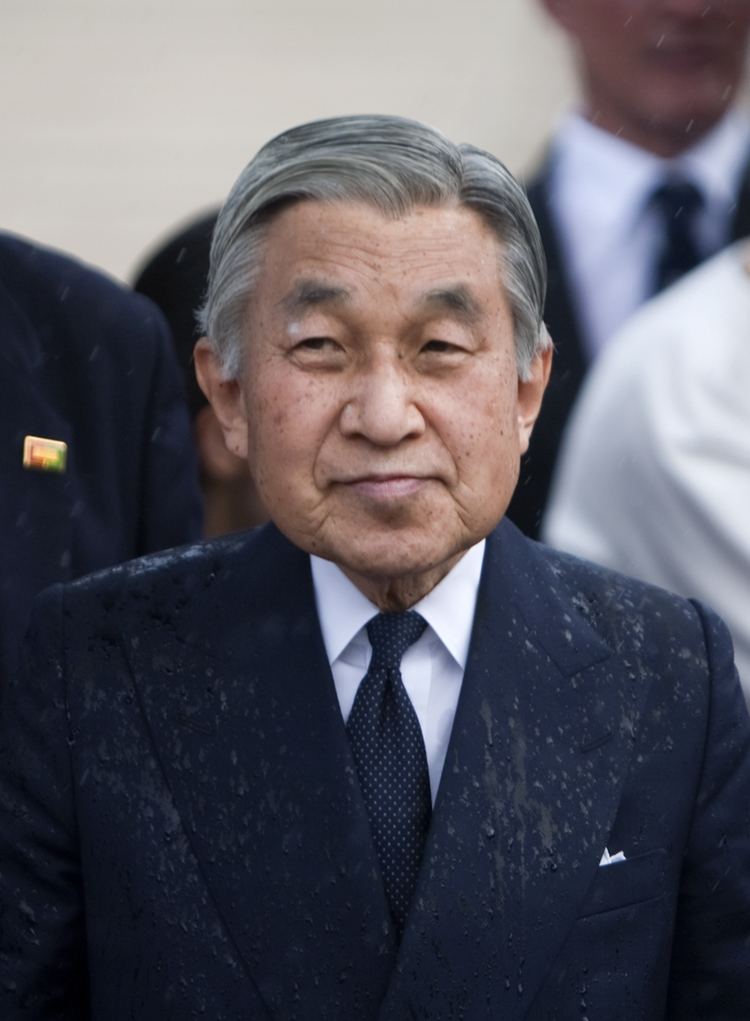
Name
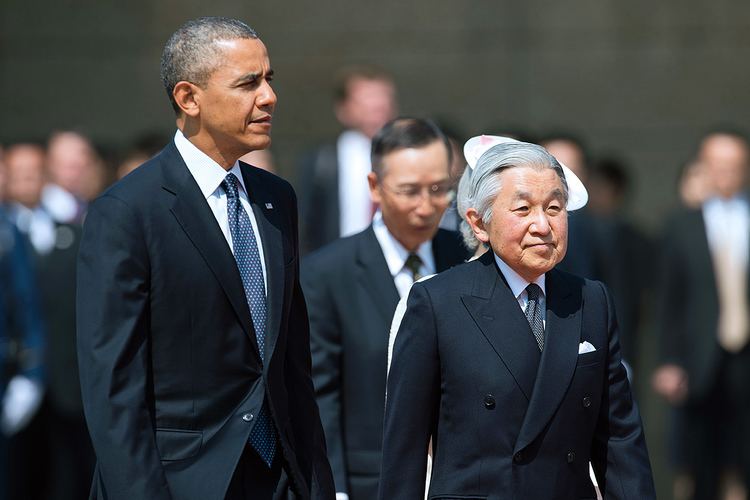
In Japan, the Emperor is never referred to by his given name, but rather is referred to as "His Majesty the Emperor" (天皇陛下, Tennō Heika) which may be shortened to "His Majesty" (陛下, Heika). In writing, the Emperor is also referred to formally as "The Reigning Emperor" (今上天皇, Kinjō Tennō). The era of Akihito's reign bears the name "Heisei" (平成), and according to custom he will be renamed "Emperor Heisei" (平成天皇, Heisei Tennō, see "posthumous name") by order of the Cabinet after his death. At the same time, the name of the next era under his successor will be established. If the Emperor were to abdicate, he would receive the title of Jōkō (上皇), an abbreviation of Daijō Tennō (太上天皇, Retired Emperor), and a new era would be established.
Biography

Akihito was born in the Tokyo Imperial Palace, Tokyo City, Japan, and is the elder son and the fifth child of the Emperor Shōwa (Hirohito) and Empress Kōjun (Nagako). Titled Prince Tsugu (継宮, Tsugu-no-miya) as a child, he was raised and educated by his private tutors and then attended the elementary and secondary departments of the Peers' School (Gakushūin) from 1940 to 1952. Unlike his predecessors in the Imperial family, he did not receive a commission as an army officer, at the request of his father, Hirohito.
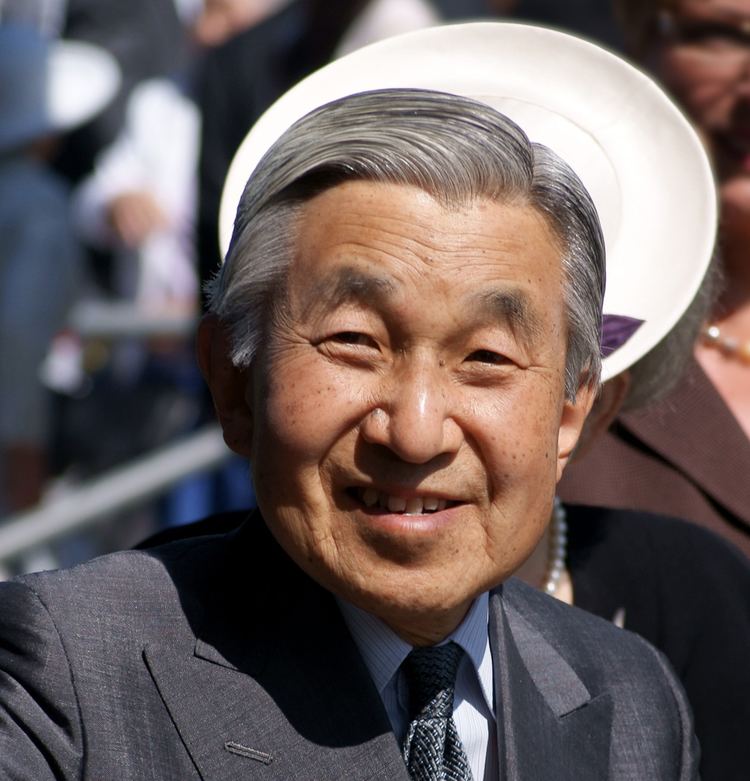
During the American firebombing raids on Tokyo in March 1945, Akihito and his younger brother, Prince Masahito, were evacuated from the city. During the American occupation of Japan following World War II, Prince Akihito was tutored in the English language and Western manners by Elizabeth Gray Vining. He briefly studied at the Department of Political Science at Gakushuin University in Tokyo, though he never received a degree.
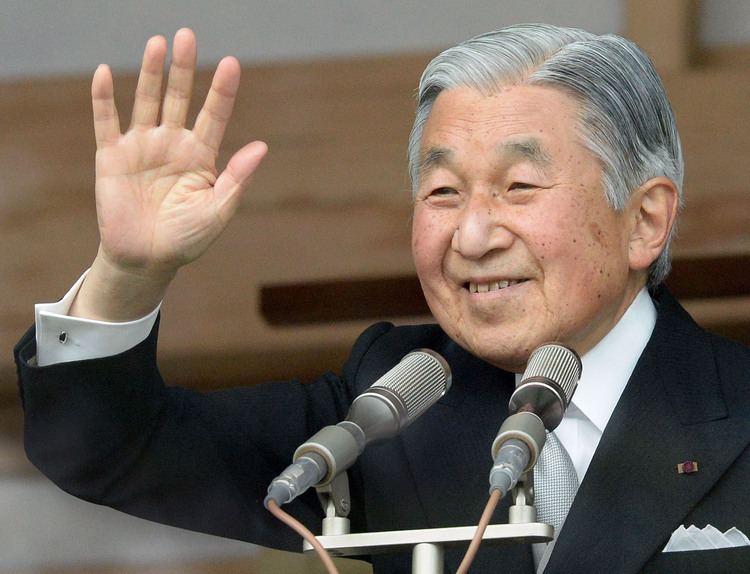
Akihito was heir-apparent to the Chrysanthemum Throne from the moment of his birth. His formal Investiture as Crown Prince (立太子礼, Rittaishi-no-rei) was held at the Tokyo Imperial Palace on 10 November 1952. In June 1953 Akihito represented Japan at the Coronation of Queen Elizabeth II in London.
Crown Prince Akihito and Crown Princess Michiko made official visits to thirty-seven countries. As an Imperial prince, Akihito compared the role of Japanese royalty to that of a robot; and, he expressed the hope that he would like to help in bringing the Imperial family closer to the people of Japan.
Upon the death of Emperor Hirohito on 7 January 1989, his eldest son the Crown Prince Akihito succeeded (senso) to the throne, with an enthronement ceremony taking place (sokui) on 12 November 1990. In 1998, during a state visit to the United Kingdom, he was invested with the UK Order of the Garter.
On 23 December 2001, during his annual birthday meeting with reporters, the Emperor, in response to a reporter's question about tensions with Korea, remarked that he felt a kinship with Koreans and went on to explain that, in the Shoku Nihongi, the mother of Emperor Kammu (736–806) is related to Muryeong of Korea, King of Baekje, a fact that was considered taboo.
Emperor Akihito underwent surgery for prostate cancer on 14 January 2003. Since succeeding to the throne, Emperor Akihito has made an effort to bring the Imperial family closer to the Japanese people. The Emperor and Empress of Japan have made official visits to eighteen countries and to all forty-seven prefectures of Japan.
In response to the 2011 Tōhoku earthquake and tsunami and the Fukushima I nuclear crisis, the Emperor made an historic televised appearance urging his people not to give up hope and to help each other. The Emperor and Empress also made a visit on Wednesday, 30 March 2011 to a temporary shelter housing refugees of the disaster, in order to inspire hope in the people. This kind of event is also extremely rare, though in line with the Emperor's attempts to bring the Imperial family closer to the people. Later in 2011 he was admitted to hospital suffering from pneumonia. In February 2012 it was announced that the Emperor would be having a coronary examination; he underwent successful heart bypass surgery on 18 February 2012.
Possible abdication
On 13 July 2016, national broadcaster NHK reported that the Emperor intended to abdicate in favor of his eldest son Crown Prince Naruhito within a few years, citing his age; an abdication within the Imperial Family has not occurred since Emperor Kōkaku abdicated in 1817. However, senior officials within the Imperial Household Agency denied that there was any official plan for the monarch to abdicate. A potential abdication by the Emperor would require an amendment to the Imperial Household Law, which currently has no provisions for such a move. On 8 August 2016, the Emperor gave a rare televised address, where he emphasized his advanced age and declining health; this address is interpreted as an implication of his intention to abdicate. According to government sources, to avoid interference with the Imperial Household Law, a one-off exception was considered which would make way for his abdication. The date of this is expected to be on 31 December 2018, the day when the Heisei period is expected to end.
On 19 May 2017, the bill that would allow Akihito to abdicate was issued by the Japanese government's cabinet. On 8 June 2017, the National Diet passed a one-off bill allowing Akihito to abdicate, and for the government to begin arranging the process of handing over the position to Crown Prince Naruhito.
Marriage and family
In August 1957, he met Michiko Shōda on a tennis court at Karuizawa near Nagano. The Imperial Household Council (a body composed of the Prime Minister of Japan, the presiding officers of the two houses of the Diet of Japan, the Chief Justice of Japan, and two members of the Imperial family) formally approved the engagement of the Crown Prince to Michiko Shōda on 27 November 1958. At that time, the media presented their encounter as a real "fairy tale", or the "romance of the tennis court". It was the first time a commoner would marry into the Imperial Family, breaking more than 2,600 years of tradition. The engagement ceremony took place on 14 January 1959, and the marriage on 10 April 1959.
The Emperor and Empress have three children: sons Naruhito, Crown Prince of Japan (born 23 February 1960, formerly The Prince Hiro) and Fumihito, Prince Akishino (born 30 November 1965, formerly The Prince Aya) and daughter Mrs. Sayako Kuroda (born 18 April 1969, formerly The Princess Nori).
The announcement about the then-Crown Prince Akihito's engagement and marriage to the then-Ms. Michiko Shōda drew opposition from traditionalist groups, because Shōda came from a Roman Catholic family. Although Shōda was never baptized, she was educated in Catholic schools and seemed to share the faith of her parents. Rumors also speculated that Empress Kōjun had opposed the engagement. After the death of Empress Kōjun in 2000, Reuters reported that she was one of the strongest opponents of her son's marriage, and that in the 1960s, she had driven her daughter-in-law and grandchildren to depression by persistently accusing her of not being suitable for her son.
Official functions
Despite being strictly constrained by his constitutional position, he also issued several wide-ranging statements of remorse to Asian countries, for their suffering under Japanese occupation, beginning with an expression of remorse to China made in April 1989, three months after the death of his father, Emperor Shōwa.
In June 2005, the Emperor visited the island of Saipan (part of the Northern Mariana Islands, a U.S. territory), the site of a battle in World War II from 15 June to 9 July 1944 (known as the Battle of Saipan). Accompanied by Empress Michiko, he offered prayers and flowers at several memorials, honoring not only the Japanese who died, but also American soldiers, Korean laborers, and local islanders. It was the first trip by a Japanese monarch to a World War II battlefield abroad. The Saipan journey was received with high praise by the Japanese people, as were the Emperor's visits to war memorials in Tokyo, Hiroshima, Nagasaki and Okinawa in 1995.
Succession
On 6 September 2006, the Emperor celebrated the birth of his first grandson, Prince Hisahito, the third child of the Emperor's younger son. Prince Hisahito is the first male heir born to the Japanese imperial family in 41 years (since his father Prince Akishino) and could avert a possible succession crisis as the Emperor's elder son, the Crown Prince Naruhito, has only one daughter, Princess Aiko. Under Japan's male-only succession law, Princess Aiko is not eligible for the throne. The birth of Prince Hisahito could mean that proposed changes to the law to allow Aiko to ascend the Chrysanthemum Throne will not go through after being temporarily shelved following the announcement of Princess Kiko's third pregnancy in February 2006. The supporters of changes criticized the current law as it placed a burden on the few aging males old enough to perform royal duties as females left the family.
Ichthyological research
In extension of his father's interest in marine biology, the Emperor is a published ichthyological researcher, and has specialized in studies within the taxonomy of the family Gobiidae. He has written papers for scholarly journals such as Gene and the Japanese Journal of Ichthyology.
He has also written papers about the history of science during the Edo and Meiji eras, which were published in Science and Nature. In 2005, a newly described goby was named Exyrias akihito in his honour.
